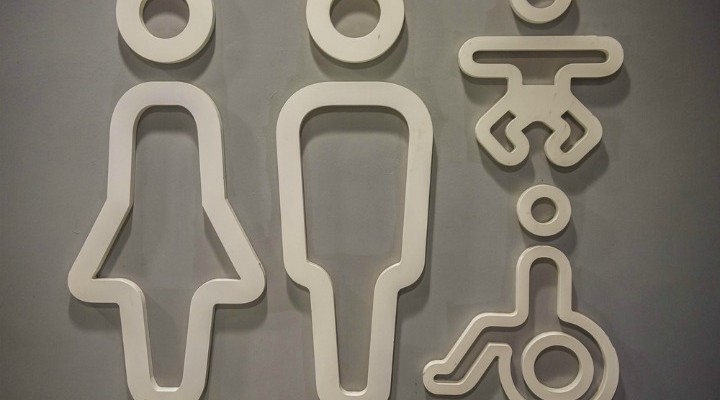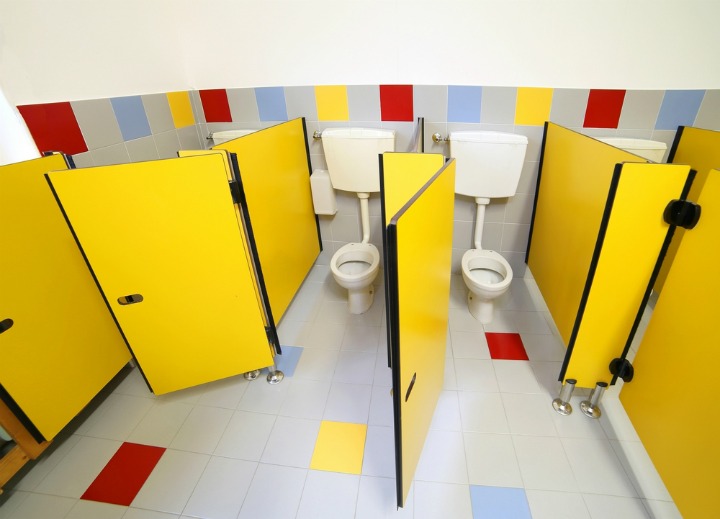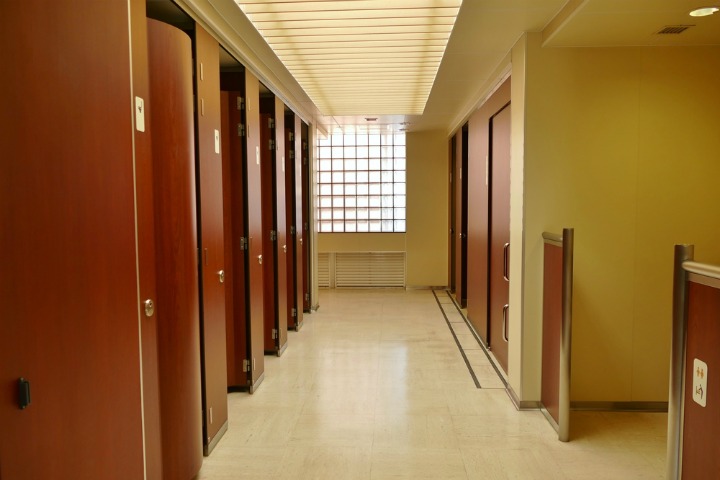Is 2017 Finally the Year of Inclusive Bathroom Design?

Bathroom designs have come a long way from the traditional layouts we were used to seeing in the past. Now bathrooms can have floor to ceiling windows, sunken baths, floating toilets and even sinks balancing on the frame of an old bike. Anything seems to be possible when it comes to the bathroom designs we can have now, so how come most of them aren't really hitting the mark for all genders? For many, bathrooms are not only a space for going to the toilet or cleaning but also a place for seeking privacy. However, sometimes this privacy can make bathroom users particularly vulnerable, which is where the inclusive bathroom design is very much needed.
Why do we need inclusive bathrooms?
Everyone has had high school fears, great or small, of being caught in the toilets alone by that particularly nasty bully. Fortunately for most of us, these fears tend to fade once we've left the realms of the educational institution, but this isn't the case for everyone. Bathrooms such as those that are divided between male and female genders can be particularly exclusive, leaving many would-be public toilet users without a peaceful place to spend a penny.

Transgender individuals, or those that have a fluctuating sense of gender identity, can feel torn when faced with male v female toilets. They face backlash when entering either, and a sense of discomfort from feeling as if they don’t belong, or that they’re not welcome. The exclusive bathroom excludes many of the LGBTQ community, as well as being ‘the only everyday social institution remaining in which separation by gender is the norm’ as Jeannie Suk Gersen writes for The New Yorker.
People with disabilities also face the issue of having to use a singular toilet that is often in a different area than the regular ones. This means they must use a different bathroom than their friends and family and can lead to a feeling of exclusion or make them feel singled out.
Will we see them soon?
There are some arguments against the installation of the gender neutral, inclusive bathroom, but these arguments are largely outdated, citing the predation on women and children as a possible outcome. However, as Gersen goes on to say herself, in a world where men and women work, eat, study, exercise and sometimes even worship next to each other, how come this predation is not such a concern outside of the bathroom?
Inclusive bathrooms open up the public bathroom space to one that’s welcoming for all. Not only does it mean transgender people can use bathrooms without worrying, but it also moves men and women to a more equal footing. Additionally, people of all abilities could share the same space without concern. Since 1995, the Disability Discrimination Act has meant that disabled people should have equal access to public spaces and services. Currently, disabled people are catered for with their own separate toilets, but integrating them with the regular toilets would allow them to share the same space as able bodied people. No longer would there be longer queues outside the ladies’ toilets and nor would there be any confusing bathroom signs.
Inclusive bathrooms at home

In most homes, we have a shared bathroom between everyone that lives there. This means that it is a safe space regardless of gender, age, size or physical ability. Now you can buy a whole range of items to make your life easier if your family is of differing heights, shapes and abilities.
From small, easily installed modifications such as grab bars to walk in showers and baths, your bathroom can be customised to make the space perfect for you. Your bathroom should be a place of relaxation, so it’s important to make it as accessible as possible for your needs. Grab rails no longer just come in the standard stark white that you see in public toilets. Now you can buy warm to the touch teflon coated, chrome plated, brass, and even removable grab rails with straight, curved and squared shapes to suit your bathroom design requirements. The grab rail does not have to be an unsightly addition to your home any more!
You can also get wash basins and toilet basins that have adjustable heights. These are particularly useful for families with both tall and short members or where a family member suffers with mobility issues or uses a wheelchair. The appliances can be easily adjusted to suit whichever height is comfortable for you before you use them which not only improves support it is also healthier for your body too!
Walk in/ accesible showers and baths have also come a long way since the dated hospital styles of the last decades. With sleek, discreet doors and wide tubs, they are hardly noticeable as anything different and can actually offer a 'wow factor' to your home. They also provide easy access for bathing and cleaning. Wet rooms are another great alternative, giving access with no boundaries for ultimate convenience.
